The 15 Florida’s Famous Attractions In Vintage Photos
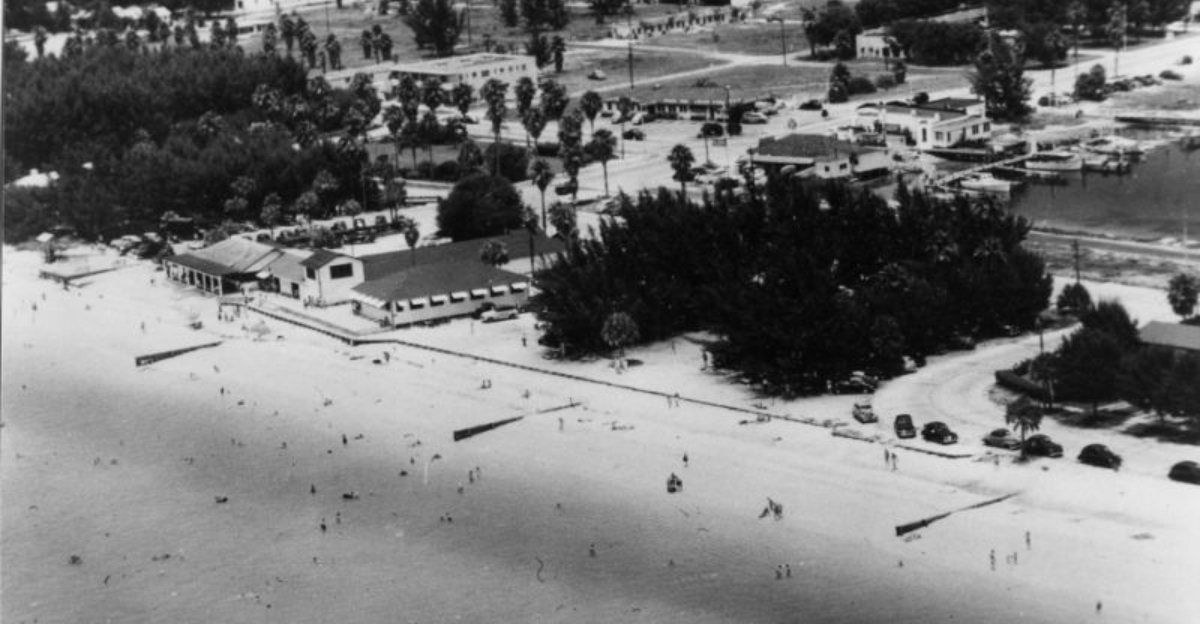
Florida’s tourist attractions have a fascinating history, much of which remains hidden beneath the modern-day hustle of theme parks and bustling beaches.
Long before the massive resorts and world-famous attractions, Florida was known for its quirky roadside stops, small family-run parks, and stunning natural wonders. These vintage photos transport us back to a simpler era of tourism in the Sunshine State, where the charm of local attractions and intimate experiences captured the hearts of travelers.
Let’s take a step back in time and explore these nostalgic Florida destinations through the lens of the past.
1. Old Miami Beach

The glamorous Art Deco hotels lining Ocean Drive weren’t always the colorful icons we know today. In the 1940s, these architectural gems stood fresh and new, painted mostly white to reflect the blazing Florida sun.
Tourists arrived in classic automobiles, women wore one-piece bathing suits with modest skirts, and men often kept their dress shirts on at the beach. Beach umbrellas dotted the shoreline as far as the eye could see.
Miami Beach’s famous lifeguard stands looked quite different too – simple wooden structures rather than today’s colorful huts that have become Instagram favorites.
2. Vintage Daytona 500
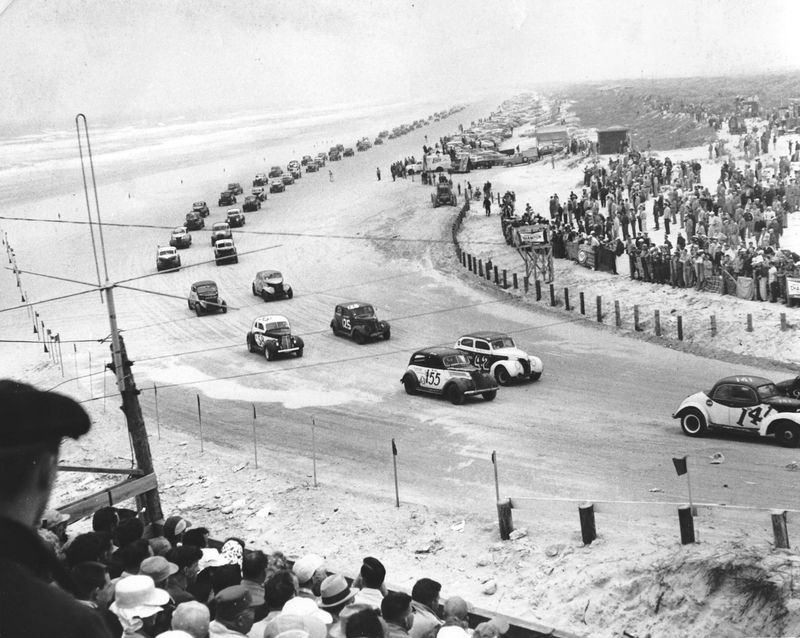
Racing on the hard-packed sands of Daytona Beach began long before NASCAR built its famous speedway. Cars zoomed along the shoreline while spectators lined the beach in their Sunday best, some even bringing picnic baskets and chairs.
These early races featured stock cars that actually looked like regular street vehicles. Drivers wore simple leather helmets and goggles, a far cry from today’s high-tech safety gear.
When the tide came in, racing stopped completely! The makeshift grandstands consisted of wooden platforms, and fans often watched from the roofs of their parked cars for a better view of the action.
3. Classic Key West Streets
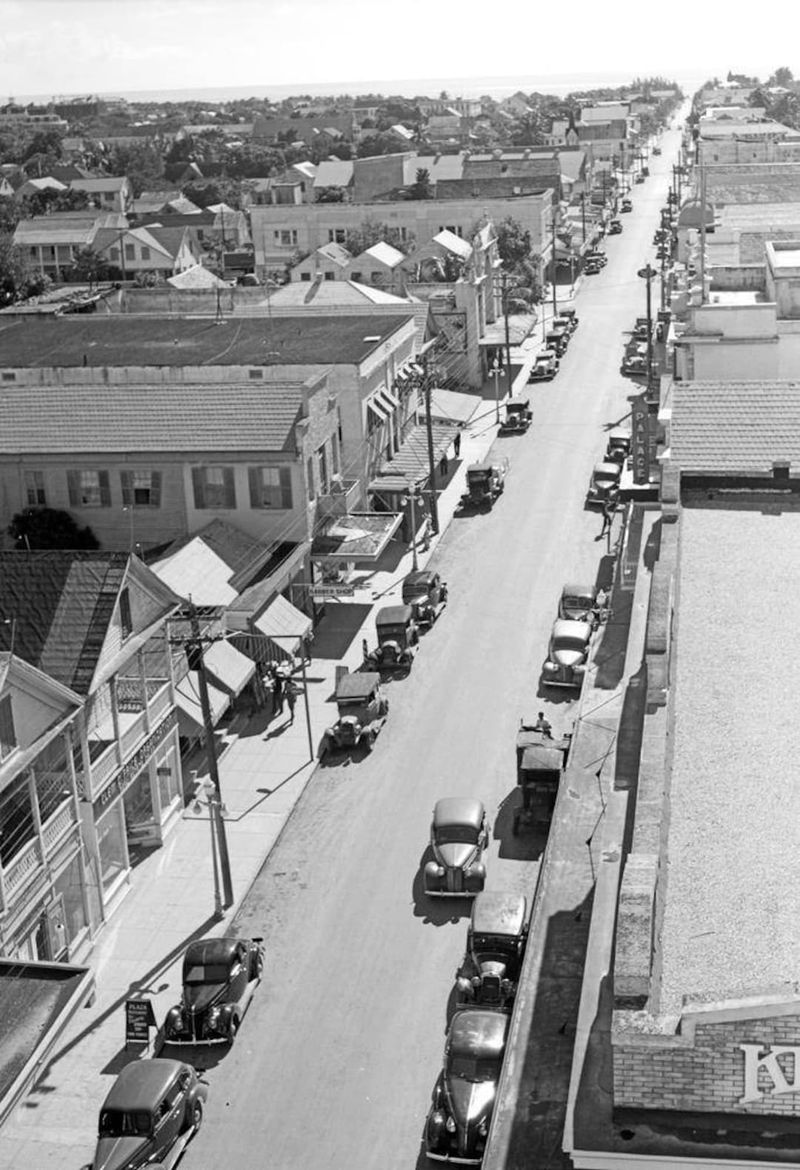
Duval Street in the 1930s looked remarkably different than today’s bustling tourist hub. Horses and carts shared narrow roads with early automobiles, while locals gathered on porches to escape the heat.
The famous Hemingway House stood much as it does now, but surrounded by open land rather than souvenir shops. Chickens roamed freely even back then – some things never change in Key West!
Fishing was the main industry, not tourism. The docks overflowed with massive catches being prepared for shipping to mainland Florida. Local bars served mostly fishermen and military personnel from the nearby naval base rather than today’s cruise ship passengers.
4. Old-Era Walt Disney World

When Disney World first opened its gates in 1971, it was just Magic Kingdom standing alone amidst Florida’s undeveloped wetlands. The parking lot came right up to the entrance – no monorail across a lagoon required!
Ticket books replaced today’s all-access passes, with attractions rated from A (minor rides) to E (major attractions). Guests dressed formally for their Disney visits – men in ties and women in dresses weren’t uncommon.
Original attractions like 20,000 Leagues Under the Sea and Mr. Toad’s Wild Ride drew long lines. The iconic Cinderella Castle looked much the same, though its surrounding gardens and pathways have evolved considerably over the decades.
5. Cypress Gardens Shows
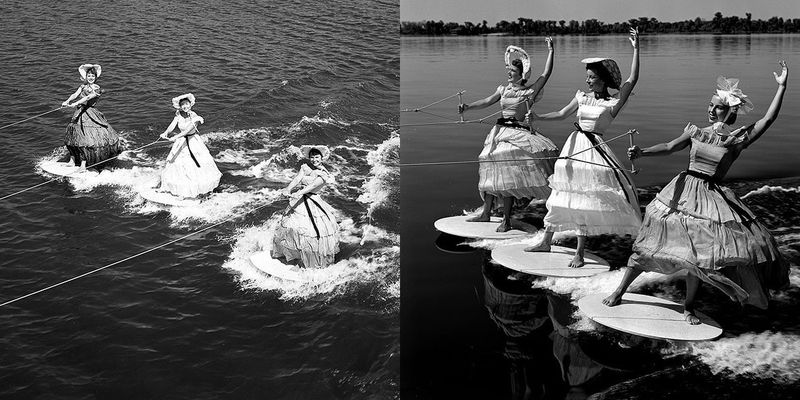
Long before Legoland took over the property, Cypress Gardens reigned as Florida’s botanical wonderland. The famous water ski shows featured daring young performers forming human pyramids while speeding across Lake Eloise.
Southern belles in hoop skirts strolled through meticulously maintained gardens, posing for photos with delighted tourists. These women became iconic symbols of the park, representing an idealized vision of Old South charm.
The botanical gardens themselves were the true stars – lush displays created by founder Dick Pope Sr. and his wife Julie. Their vision transformed a swampy lakeside into one of America’s first theme parks, drawing visitors and film crews from around the world to this slice of manufactured Southern paradise.
6. Retro Alligator Wrestling
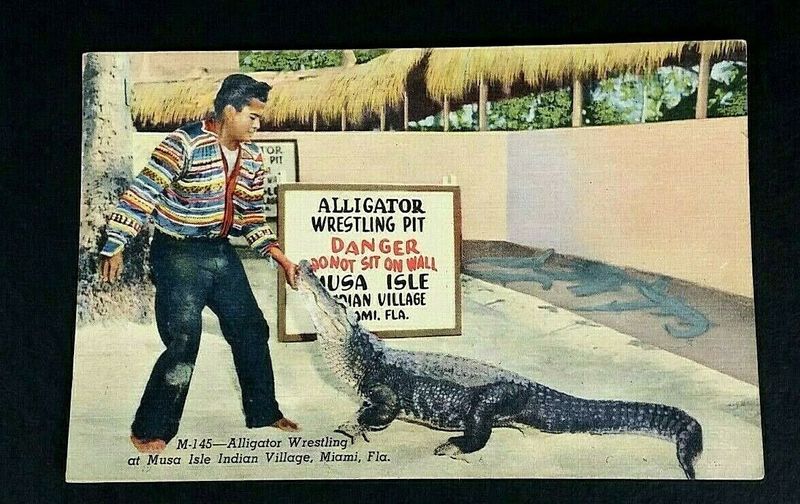
Did you know alligator wrestling began as a survival skill among Seminole tribe members? By the 1930s, it had transformed into a tourist attraction that drew gasping crowds to roadside parks throughout Florida.
Performers wore simple clothing – often just pants and no shoes – as they demonstrated dangerous holds like the famous jaw lock. Wooden grandstands surrounded sand pits where these daring shows took place several times daily.
Visitors could often hold baby alligators afterward or purchase alligator teeth as souvenirs. The controversial practice represented Florida’s wild frontier image, with hand-painted signs along highways advertising “LIVE GATORS” to entice travelers to stop at these quintessential Florida attractions.
7. Original SeaWorld Orlando
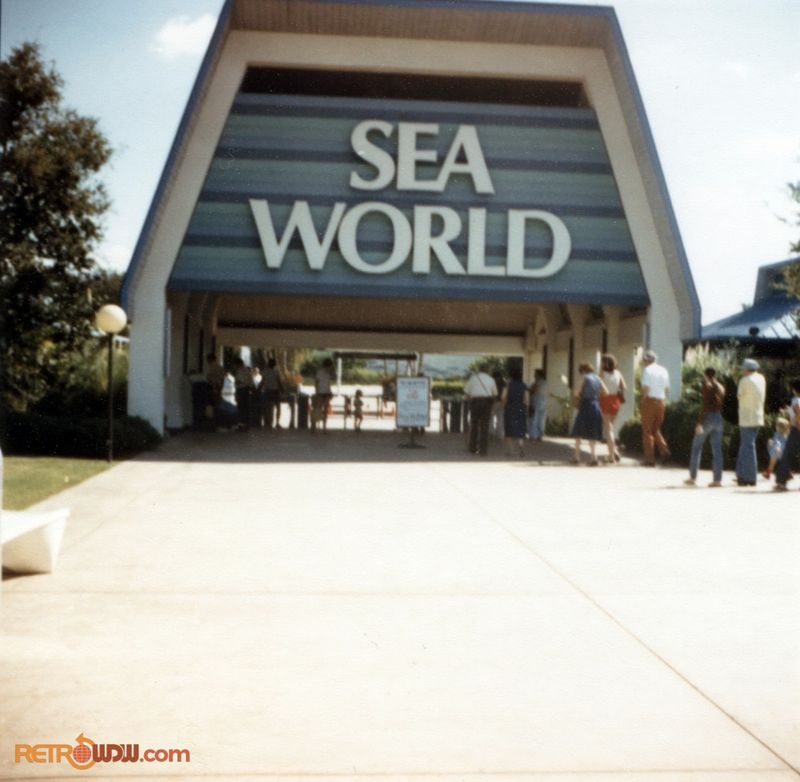
When SeaWorld first opened its Orlando gates in 1973, it looked more like a marine research facility than today’s thrill-ride destination. The original park featured simple concrete stadiums where visitors sat on aluminum benches to watch pioneering orca and dolphin shows.
Trainers wore modest white uniforms rather than today’s colorful wetsuits. They performed basic behaviors with the animals – a far cry from the elaborate choreographed spectacles that would come later.
The park’s layout centered around the massive shark encounter tube and feeding pools where guests purchased trays of fish to feed dolphins and sea lions. Educational exhibits dominated the experience, with conservation messages already forming the backbone of the park’s mission even in those early days.
8. Pre-Theme Park Orlando
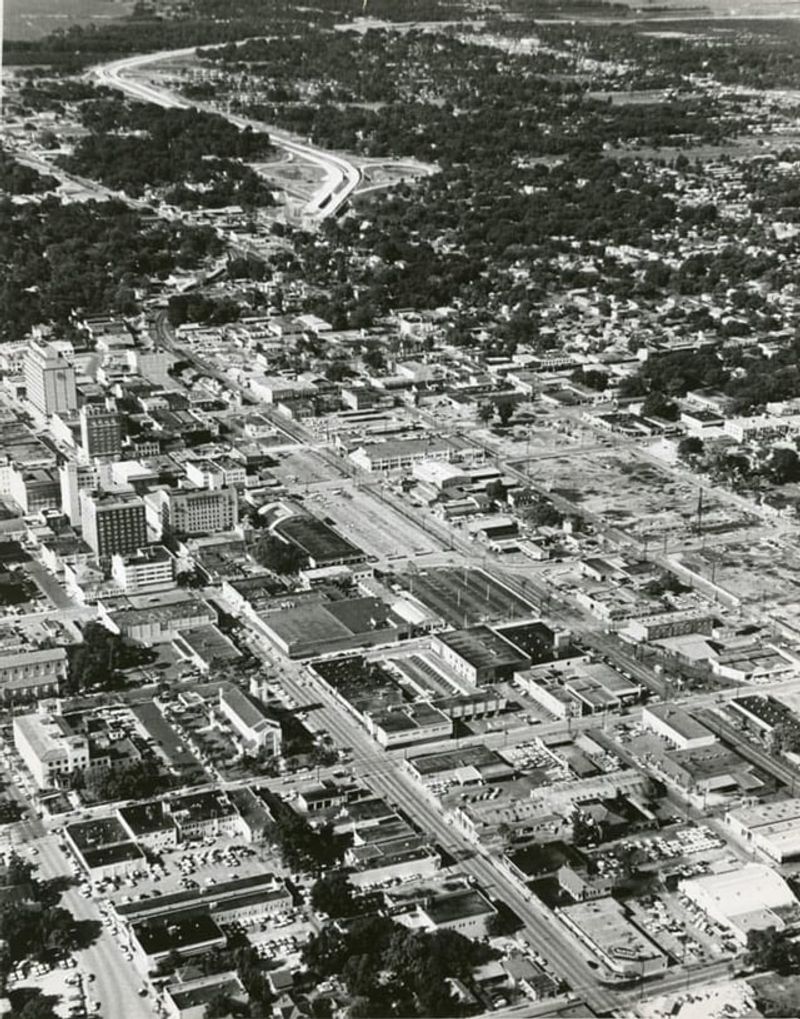
Before Mickey Mouse arrived, Orlando was primarily cattle country and citrus groves. Downtown Orlando in the 1960s featured a sleepy main street with family-owned shops and simple diners serving home-cooked meals.
Orange groves stretched as far as the eye could see, with roadside stands selling fresh juice to passing motorists. The landscape was dominated by natural lakes and pine forests rather than hotel towers and highway interchanges.
Local attractions included Gatorland (then called Snake Village and Alligator Farm) and simple glass-bottom boat tours at nearby Silver Springs. Few could have predicted that this agricultural community would transform into one of the world’s premier tourist destinations within just a decade.
9. Vintage St. Augustine

America’s oldest city looks remarkably preserved in vintage photos, though with fewer souvenir shops! The Castillo de San Marcos stood sentinel much as it does today, but visitors in the 1920s often arrived by streetcar rather than tour bus.
Women in long dresses and men in suits strolled the narrow streets despite Florida’s heat. The old city gates welcomed far fewer travelers, and horse-drawn carriages weren’t just for tourists – they served as actual transportation.
The famous Fountain of Youth attraction featured simple wooden structures around the natural spring. Ponce de Leon’s supposed discovery was already drawing health-seekers long before modern marketing made it a must-see stop. The Colonial Quarter housed actual residents rather than costumed interpreters.
10. 1950s Everglades Airboats
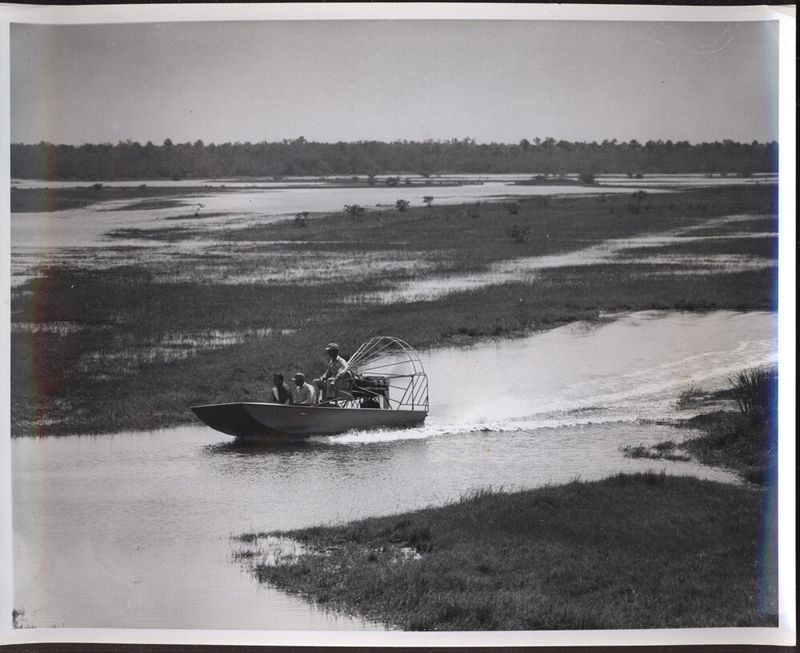
The earliest airboats looked nothing like today’s high-powered machines. These handmade wooden crafts often used repurposed airplane propellers attached to automobile engines – truly Florida ingenuity at work!
Tourists wore their Sunday best for Everglades excursions, with women in dresses and men in slacks and button-up shirts. No quick-dry performance fabrics back then, despite Florida’s notorious humidity.
Guides pointed out wildlife using simple wooden poles rather than microphones. The trips ventured deeper into undeveloped sections of the Everglades, as much of what is now protected national park was still accessible. Alligator sightings were guaranteed, with some boats even carrying raw chicken to lure the reptiles closer for amazed tourists.
11. Old Clearwater Beach

Clearwater Beach in the 1940s was barely recognizable compared to today’s developed shoreline. Small wooden cottages and fishing shacks dotted the white sand instead of high-rise hotels and condominiums.
Families arrived for the day with picnic baskets and simple beach toys. The famous Pier 60 existed in a much simpler form – a wooden structure extending into the Gulf primarily used by fishermen rather than street performers and craft vendors.
Palm trees were intentionally planted to create the tropical paradise image – many weren’t native to the area! The shallow, warm Gulf waters were the main attraction, with children splashing while parents relaxed in wooden beach chairs beneath canvas umbrellas, enjoying Florida’s famous sunshine without today’s concerns about SPF levels.
12. Tarpon Springs Sponge Docks

The sponge diving industry that made Tarpon Springs famous looks remarkably authentic in vintage photos from the 1930s. Greek divers in traditional heavy canvas suits and copper helmets prepared to descend from wooden boats packed tightly along the Anclote River.
Fresh sponges dried on the docks in massive piles before being sold to merchants. The air must have smelled strongly of salt, fish, and the distinct aroma of natural sponges!
Local Greek families operated small cafes serving authentic cuisine to workers rather than tourists. The sponge exchange building served as a true marketplace rather than a shopping destination. Religious ceremonies blessing the fleet drew the entire community together, maintaining traditions brought directly from the Mediterranean to Florida’s Gulf coast.
13. Sarasota’s Ringling Era

When the Ringling Brothers made Sarasota their winter headquarters in the 1920s, they transformed the sleepy fishing village into a circus wonderland. Elephants sometimes walked down main street during parade rehearsals, much to the delight of local children.
John Ringling’s magnificent Ca’ d’Zan mansion stood as a testament to circus wealth, its Venetian-inspired architecture appearing even more striking against Florida’s undeveloped coastline. The grounds housed not just the family but visiting performers from around the world.
Circus performers practiced their acts outdoors in good weather, creating impromptu shows for lucky passersby. The Ringling Art Museum was John’s personal collection before becoming public – visitors often saw the circus magnate himself wandering the galleries, proudly explaining his latest European acquisitions.
14. Early Palm Beach Luxury

The Flagler era of Palm Beach exuded a level of luxury that seems almost unbelievable today. Henry Flagler’s Royal Poinciana Hotel, once the world’s largest wooden structure, dominated the landscape with its distinctive yellow façade and red roof.
Society women paraded along Worth Avenue in formal attire regardless of the temperature, carrying parasols to protect their skin from the Florida sun. Men wore white linen suits and boater hats as they gathered for afternoon cocktails on hotel verandas.
Hotel staff outnumbered guests, providing extraordinary service levels. The famous Palm Beach “season” lasted just a few winter months when northern elites migrated south. Rolls Royces and other luxury automobiles lined the drives of these magnificent hotels, while yachts belonging to Vanderbilts and Astors filled the harbor.
15. Florida’s Roadside Oddities

Before interstate highways, Florida’s roadside attractions competed fiercely for tourist attention with increasingly bizarre offerings. Hand-painted signs promised wonders like “World’s Largest Alligator” or “Live Mermaids” to entice travelers to stop.
Roadside stands shaped like oranges sold fresh juice, while concrete dinosaurs and giant sharks’ mouths formed entrances to small family-run attractions. Tourists happily paid small admission fees to see two-headed calves, “genuine” mummy remains, or performing chimpanzees.
Souvenir shops sold everything from pressed pennies to taxidermied baby alligators. The quirkiest attractions featured “gravity-defying” mystery houses where water appeared to flow uphill or people seemed to stand at impossible angles – simple optical illusions that amazed visitors in the pre-digital entertainment era.
